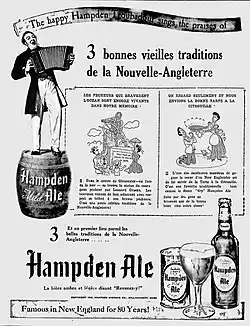
French colonization of the Americas involved French colonial activity in a wide range of regions in the New World, most notably around what are now western Canada, the south-western United States, particularly Louisiana, numerous islands in the Caribbean, and French Guiana in the north of South America. This settler colonialism began right at the beginning of the seventeenth century with the establishment of the first French trading posts on the St Lawrence River in Quebec. It lasted in its most active phase for the next two centuries until the Haitian Revolution (1791–1804) and the Louisiana Purchase (1803) greatly reduced France's involvement in the western hemisphere, with the Canadian possessions having already been lost at the end of the Seven Years’ War in 1763. Numerous smaller islands in the Caribbean remain French territories to this day. French settler colonialism in several parts of the Americas was considerable and a great many people in parts of Canada, Louisiana and adjoining US states, Haiti, French Guiana and several smaller Caribbean islands will be able to trace their ancestors back to people who arrived to these regions from France in the seventeenth and eighteenth centuries.[1]
Research your ancestors on MyHeritage
French colonization of the Americas chronology of eventsFrench colonization of the Americas chronology of events
The European age of colonization largely began in the 1490s after the discovery of the Americas and the sea route to Africa. However, for a full century thereafter it almost exclusively involved the Spanish and the Portuguese. The English and French though were attempting to commence their own colonial projects, primarily in the Americas. Hence we find French explorers like Jacques Cartier exploring the Atlantic seaboard of North America in the 1530s and 1540s, while an abortive project to establish a French colony in terra Florida was attempted in the 1560s. There was also a failed effort to found a religious haven for French Protestants, the Huguenots, in parts of Brazil in the 1550s.[2]

The first permanent French colonies in the western hemisphere were established in the first years of the seventeenth century along the St Lawrence River by individuals like Samuel de Champlain. The colonies here would become known as ‘New France’, though we would call the region involved Quebec today. These colonies were supplemented by later French settlements on Newfoundland and Acadia.[3] Then, beginning in the 1670s, Frenchmen began exploring the mouth of the Mississippi River. New Orleans was founded here in 1718 and over the next half a century there was a concerted strategy by the French of expanding up the course of the Mississippi and Ohio Rivers and inland from Quebec, the idea being to unite these two disparate parts of New France at the Great Lakes. The ultimate goal of this was to hem the British into the Thirteen Colonies they controlled on the eastern seaboard of North America and prevent them from expanding further westwards into the interior.[4]
Meanwhile, in the Caribbean the French had also, like the Spanish, English, Dutch and Danish, acquired control over several islands, most of which were used to produce sugar cane during the boom in that crop in the seventeenth century. These included the islands of Guadeloupe, Martinique and Saint Barthélemy, while the French also acquired control of the northern half of the island of Saint Martin – the Dutch took control of the southern half – and the western end of the very large Caribbean island of Hispaniola, the Spanish controlling the central and eastern sections of it. Finally, the colony of Cayenne had been founded on the northern coast of South America in the 1640s and this formed the basis for the subsequent development of French Guiana.[5]

France’s colonies in the New World prospered through the seventeenth and early eighteenth centuries, with the sugar colonies in the Caribbean becoming particularly affluent. For a time it seemed as though the French would rival the British as the newly emerging great powers of the western hemisphere as Spain declined, however in the space of less than half a century from the 1750s onwards France’s colonies were decimated. Firstly, the French lost the Indian Wars in North America to the British, a constituent conflict of the Seven Years’ War, and in the resulting peace in 1763 France ceded its colonies in Quebec, Newfoundland and Acadia to Britain.[6] Then, in 1791, as the French Revolution was raging at home in Europe, the slave community of the French colony of Saint Domingue on Hispaniola rose up and initiated the Haitian Revolution, an event which would eventuate in the first black majority state in the Americas acquiring its independence by 1804.[7] Finally, in 1803, the government of Napoleon Bonaparte, conscious that France’s colonial ambitions in the New World were in tatters owing to being cut off from France itself during the French Revolutionary and Napoleonic Wars, sold the Louisiana Territory to the United States. Hence, France was largely left with just Martinique, Guadeloupe, Saint Barthélemy, half of Saint Martin and French Guiana, territories which it has retained down to the present day, as well as the two small islands of Saint-Pierre and Miquelon off the coast of Newfoundland.[8]
Extent of migration during French colonization of the AmericasExtent of migration during French colonization of the Americas

French colonial migration to the Americas was nowhere near as substantial as English and Spanish migration. For instance, the population of New France in North America is understood to have only been around 70,000 strong when the British seized control of Quebec and the other Canadian provinces in 1763. By way of contrast, there were well over two million people living in the British Thirteen Colonies to the south by then. Perhaps as little as 15,000 French men and women had migrated to New France since 1600, the rest of the population being accounted for by natural growth within the settler population. Thereafter Louisiana became the focus of French settlement in North America, but even New Orleans only had a population of around 8,000 people at the time of the Louisiana Purchase in 1803.[9]
The population of some of the other French colonies was more substantial. It is estimated that the colony of Saint Domingue on Hispaniola was home to some 550,000 people on the eve of the Haitian Revolution of 1791.[10] However, as the very success of that Revolution indicates, this primarily consisted of slaves and freed people of African heritage. White people of French ethnicity only made up about 6% of the population of the colony. Similar scenarios prevailed on Martinique, Guadeloupe, Saint Barthélemy, Saint Martin and French Guiana. Thus, while French colonization of the Americas was significant in leading to the migration of tens of thousands of French people to various parts of North America and the Caribbean, it was even more consequential in leading to the forced transplantation of hundreds of thousands of people as slaves from western Africa to the French sugar colonies of the Caribbean.[11]
Demographic impact of French colonization of the AmericasDemographic impact of French colonization of the Americas

Despite the relatively limited scale of French settlement in the New World, France’s colonial activity in the Americas has left a lasting legacy on the demography and ethnic landscape of the western hemisphere. For instance, while little more than 15,000 French people settled in New France between 1600 and 1763, the compound growth of this community over four centuries has led to there being an estimated seven million French Canadians today. Five million of these live in Canada itself, while two million live in the United States, particularly New England, owing to a period of pronounced southward migration from Canada to the US between 1840 and 1930, a phenomenon known as La Grande Hémorragie.[12]
Similarly, while the level of French settlement in Louisiana was limited prior to the Louisiana Purchase of 1803, the small French Creole community grew exponentially here over time and Louisiana and surrounding parts of the bayou and lower Mississippi River region continue to be influenced by French colonial activity here centuries ago. The same processes are true of Haiti, Martinique, Guadeloupe, Saint Barthélemy, Saint Martin and French Guiana, though with a much greater African dimension.[13]
The impact of all of this is that some sixteen million people speak French in the Americas today as a first language, while elements of French or Creole culture are prominent in Quebec and other parts of Canada, Haiti, Louisiana, Martinique, Guadeloupe, Saint Barthélemy, Saint Martin and French Guiana. There are also tens of millions of people in these parts of the Americas that can either trace their ancestry back to France in the seventeenth and eighteenth centuries or to western Africa where their ancestors were unfortunately enslaved.[14]
See alsoSee also
Explore more about French colonization of the AmericasExplore more about French colonization of the Americas
- Canada, Burials, 1800-2019 records collection on MyHeritage
- Finding French Ancestors at Legacy Family Tree Webinars
- Quebec Census Records at Legacy Family Tree Webinars
- Researching Your French and Indian War Ancestors at Legacy Family Tree Webinars
- Introduction to the Bayou State: Louisiana for Beginners at Legacy Family Tree Webinars
References
- ↑ https://www.nationalgeographic.com/history/article/story-new-france-cradle-modern-canada
- ↑ https://museeprotestant.org/en/notice/protestants-and-the-conquest-of-the-new-world/
- ↑ https://www.thecanadianencyclopedia.ca/en/timeline/samuel-de-champlain
- ↑ https://www.mnhs.org/furpost/learn/french
- ↑ https://heritage.bnf.fr/france-ameriques/en/european-settling-french-caribbean-article
- ↑ https://www.thecanadianencyclopedia.ca/en/article/seven-years-war
- ↑ https://www.english-heritage.org.uk/visit/places/portchester-castle/history-and-stories/the-haitian-revolution/
- ↑ https://www.history.com/topics/19th-century/louisiana-purchase
- ↑ https://www.thecanadianencyclopedia.ca/en/article/french-immigration-in-canada
- ↑ https://brill.com/display/book/9789004416451/BP000003.xml?language=en
- ↑ Clarence J. Munford, ‘Slavery in the French Caribbean, 1625–1715’, in Journal of Black Studies, Vol. 17, No. 1 (Sep., 1986), pp. 49–69.
- ↑ https://www.huffpost.com/archive/qc/entry/la-grande-hemorragie-qui-crea-la-diaspora_b_17274210
- ↑ https://www.neworleans.com/things-to-do/multicultural/cultures/french/
- ↑ https://guides.loc.gov/french-collections/francophone-studies/americas-caribbean

